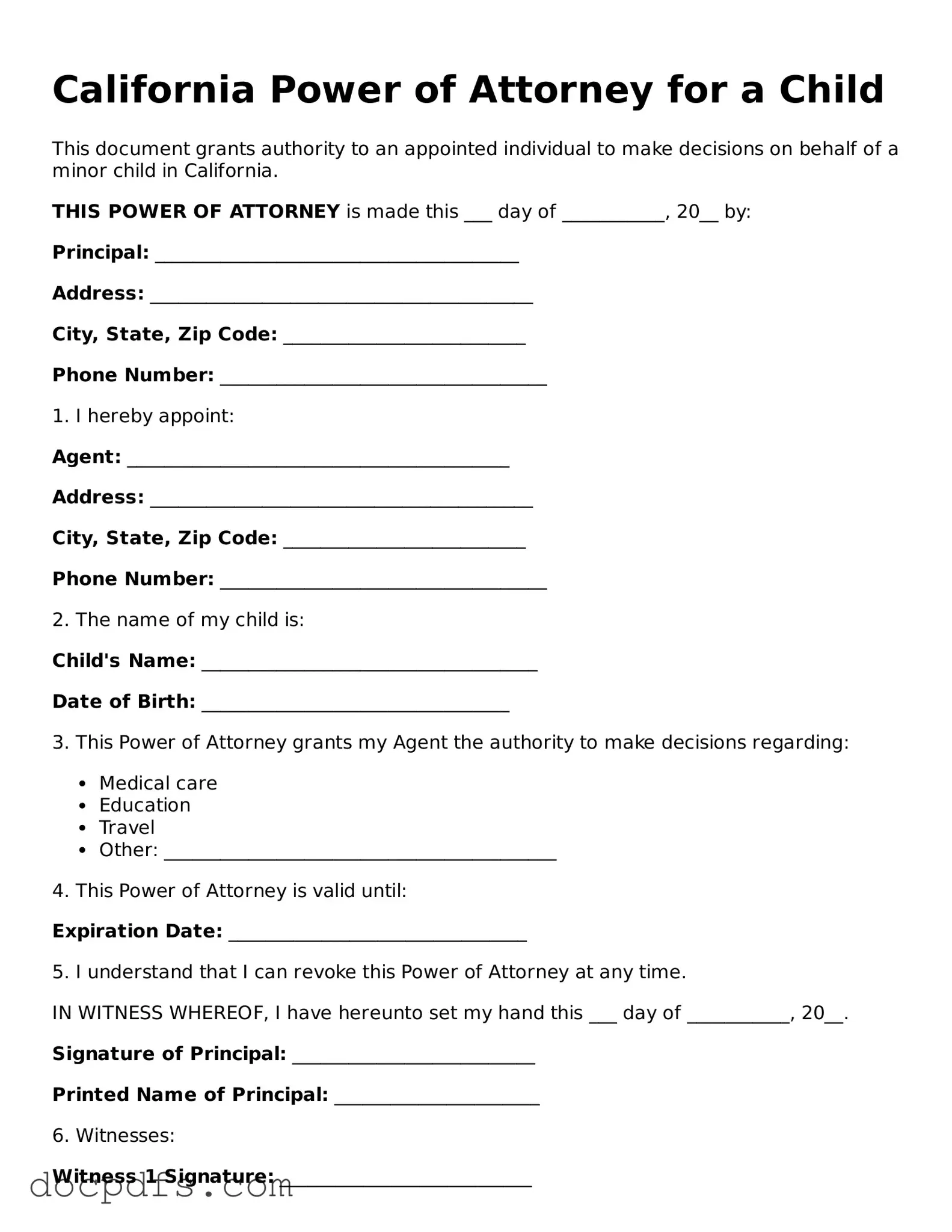What is a Power of Attorney for a Child in California?
A Power of Attorney for a Child in California is a legal document that allows a parent or guardian to grant another individual the authority to make decisions on behalf of their child. This can include decisions related to education, healthcare, and general welfare. It is often used when parents are temporarily unable to care for their child, such as during travel or medical emergencies.
Who can serve as an agent under this Power of Attorney?
The agent, or the person designated to act on behalf of the child, can be a relative, family friend, or anyone the parent trusts to make decisions for their child. However, it is important to choose someone who understands the child’s needs and values. The agent must be at least 18 years old and capable of making informed decisions.
How long does a Power of Attorney for a Child remain valid?
The Power of Attorney for a Child can remain valid for a specified period, which the parent or guardian can define in the document. If no expiration date is included, it typically remains in effect until the child turns 18 or until the parent revokes it. It’s advisable to clearly state the duration to avoid any confusion.
What decisions can the agent make on behalf of the child?
The agent can make various decisions regarding the child’s care, including:
-
Healthcare decisions, such as consenting to medical treatment.
-
Educational decisions, including enrolling the child in school or making choices about special education services.
-
General welfare decisions, which may involve daily care routines and activities.
However, the agent cannot make decisions that require parental consent under California law, such as certain legal actions or decisions regarding the child’s custody.
While notarization is not strictly required for a Power of Attorney for a Child in California, it is highly recommended. Having the document notarized adds an extra layer of authenticity and can help prevent any disputes regarding the validity of the form. It may also be required by schools or medical facilities when the agent attempts to make decisions on behalf of the child.
Can I revoke the Power of Attorney once it is established?
Yes, a parent or guardian can revoke the Power of Attorney at any time. To do so, it is best to provide a written notice to the agent and any institutions or individuals who were informed of the Power of Attorney. This ensures that everyone is aware that the authority granted to the agent has been terminated.
Power of Attorney for a Child forms can be obtained from various sources, including:
-
Legal websites that offer downloadable forms.
-
Local courts or family law offices.
-
Child welfare organizations that provide resources for parents.
It is essential to ensure that the form complies with California laws and is properly filled out to avoid any issues in the future.
